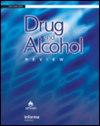Is there a link between per capita alcohol consumption and cancer mortality?
Abstract
Introduction
A growing body of evidence has established alcohol consumption as a causative factor in an increasing array of cancer types, thereby positioning it as a leading global risk factor for cancer. Surprisingly, there is a scarcity of studies examining the extent to which shifts in population drinking affect cancer mortality, despite the substantial public health implications. This paper aims to: (i) estimate the impact of changes in per capita alcohol consumption on both overall cancer mortality rates and specific types of alcohol-related cancer; and (ii) assess whether the association between cancer and population alcohol consumption is influenced by a country's drinking patterns.
Methods
We used time-series data for 19 high-income countries spanning the period 1960–2018. Cigarette sales and GDP per capita were included as control variables. The data were analysed using first-difference modelling. The World Health Organization drinking patterns score was used to evaluate a country's drinking pattern.
Results
Our findings revealed that a 1 L per capita increase in alcohol consumption was associated with a 0.9% rise in total cancer mortality among women and a 1.1% increase among men. Notably, among men, the association was more pronounced for cancers with strong evidence of alcohol's effect and for prostate cancer. For women, the alcohol effect was statistically significant for breast cancer. Generally, the estimated alcohol effects were elevated in the country group with more harmful drinking patterns.
Discussion and Conclusions
Our results indicate that lowering per capita alcohol consumption is likely to reduce cancer mortality.


 求助内容:
求助内容: 应助结果提醒方式:
应助结果提醒方式:


